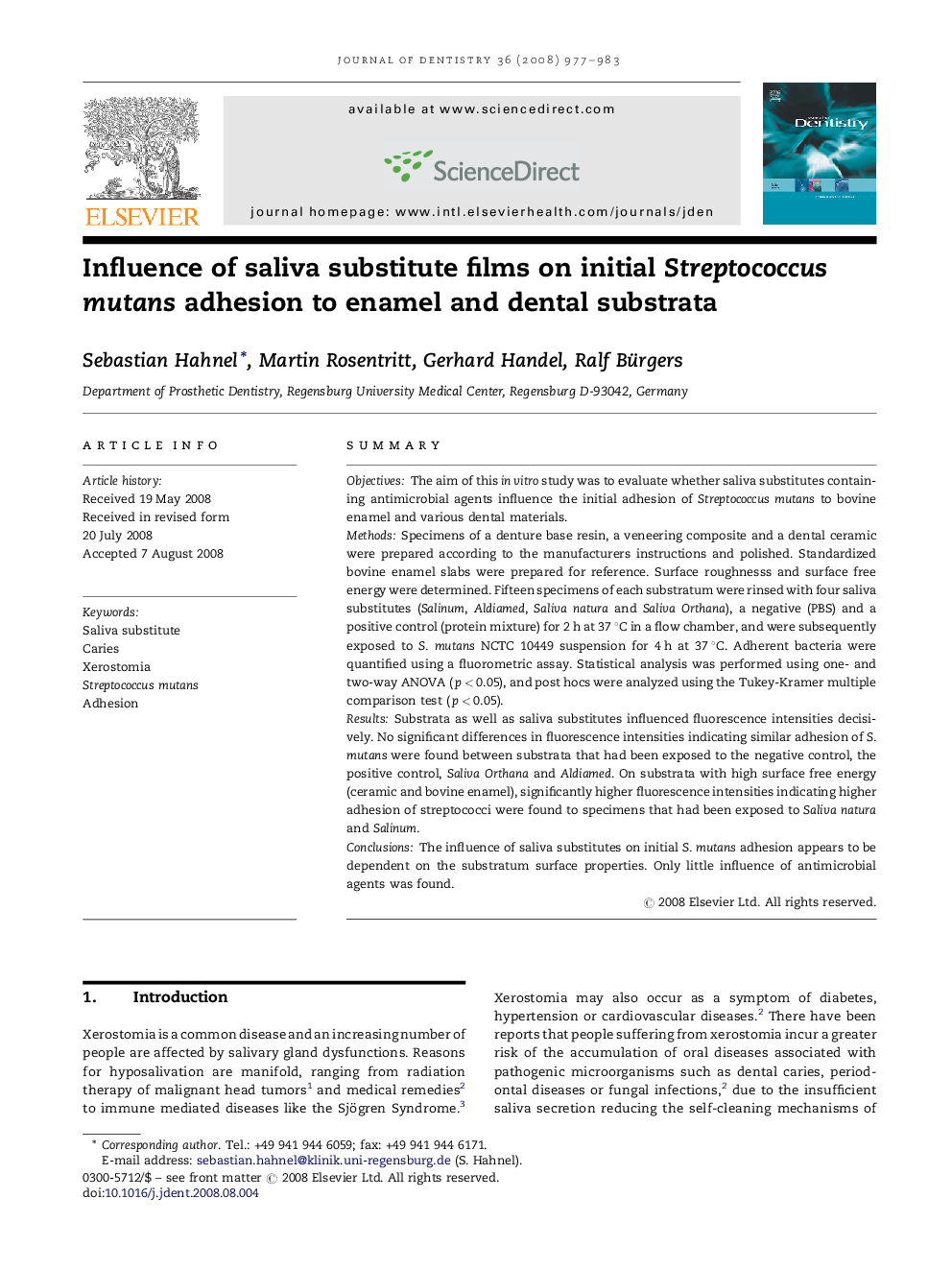| Article ID | Journal | Published Year | Pages | File Type |
|---|---|---|---|---|
| 3146376 | Journal of Dentistry | 2008 | 7 Pages |
SummaryObjectivesThe aim of this in vitro study was to evaluate whether saliva substitutes containing antimicrobial agents influence the initial adhesion of Streptococcus mutans to bovine enamel and various dental materials.MethodsSpecimens of a denture base resin, a veneering composite and a dental ceramic were prepared according to the manufacturers instructions and polished. Standardized bovine enamel slabs were prepared for reference. Surface roughnesss and surface free energy were determined. Fifteen specimens of each substratum were rinsed with four saliva substitutes (Salinum, Aldiamed, Saliva natura and Saliva Orthana), a negative (PBS) and a positive control (protein mixture) for 2 h at 37 °C in a flow chamber, and were subsequently exposed to S. mutans NCTC 10449 suspension for 4 h at 37 °C. Adherent bacteria were quantified using a fluorometric assay. Statistical analysis was performed using one- and two-way ANOVA (p < 0.05), and post hocs were analyzed using the Tukey-Kramer multiple comparison test (p < 0.05).ResultsSubstrata as well as saliva substitutes influenced fluorescence intensities decisively. No significant differences in fluorescence intensities indicating similar adhesion of S. mutans were found between substrata that had been exposed to the negative control, the positive control, Saliva Orthana and Aldiamed. On substrata with high surface free energy (ceramic and bovine enamel), significantly higher fluorescence intensities indicating higher adhesion of streptococci were found to specimens that had been exposed to Saliva natura and Salinum.ConclusionsThe influence of saliva substitutes on initial S. mutans adhesion appears to be dependent on the substratum surface properties. Only little influence of antimicrobial agents was found.
